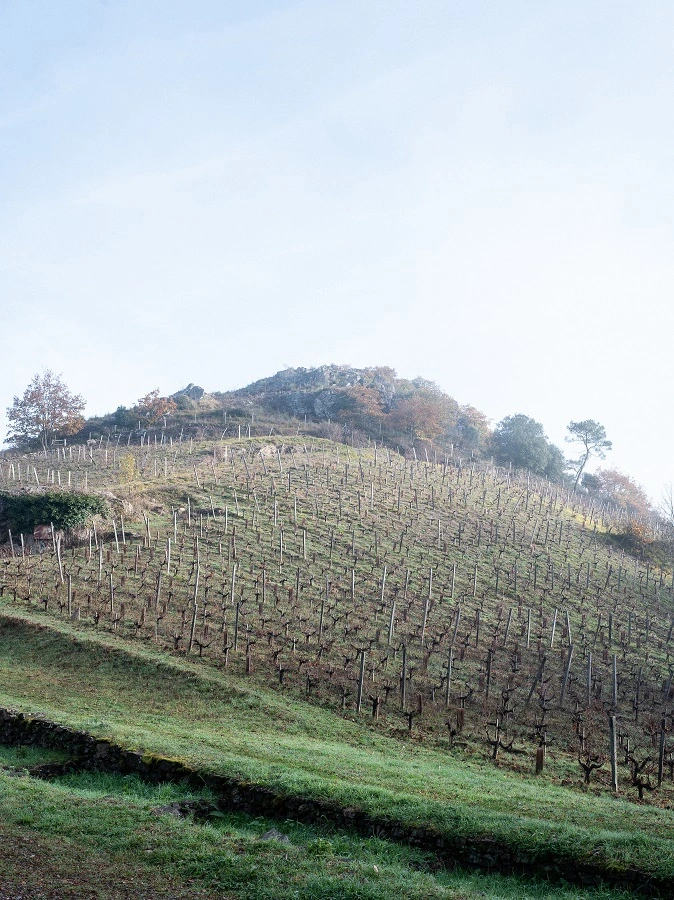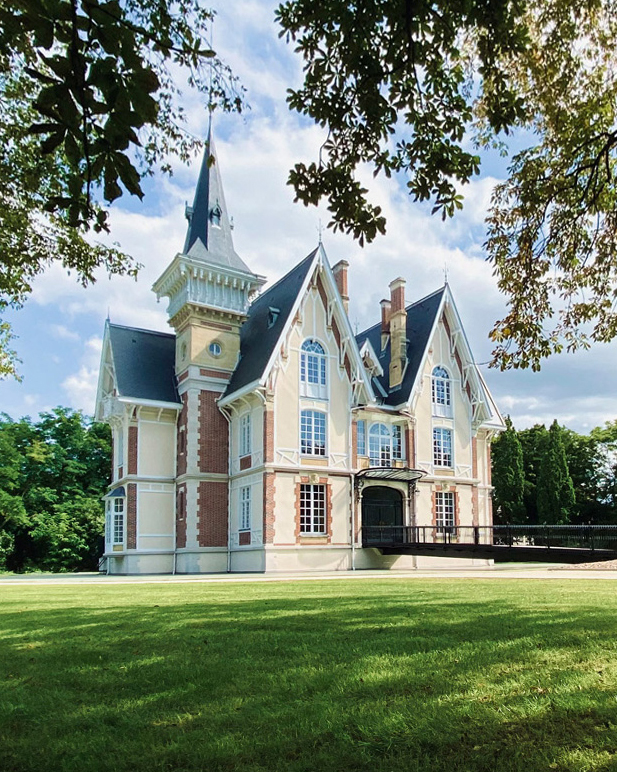Renovation and refurbishment of an eco-responsible winery: guide and advice
Design an eco-responsible winery that reflects your know-how and your terroir.


Renovating or rehabilitating a winery in an eco-responsible way requires a wide range of skills in architecture and sustainable design.
From Burgundy to Provence, via the Loire and Bordeaux regions, the challenges are the same: striking a balance between responsible, sustainable innovation and respect for tradition.
The aim is to preserve the character of the terroir and its wine production, while anchoring the winery in an ecological and sustainable approach for years to come.
That's why we're sharing our expertise with you to help you succeed in your eco-responsible winery renovation project.
Contents – Renovation and refurbishment of an eco-responsible winery :
- 1. Why renovate a winery in an eco-responsible way?
- 2. What are the key factors to consider when renovating a winery?
- 3. How can I renovate my winery in an eco-responsible way?
- a. Select sustainable materials
- b. Sustainable cellar insulation
- c. Think low-pollution energy sources
- d. Heat and ventilate while taking advantage of the environment’s natural assets
- e. Implementing sustainable solutions for the proper management of wine waste and effluents
- f. Think green roof
- 4. What are the key steps to a successful eco-responsible winery renovation project?
- 5. How to launch an eco-responsible winery renovation project?
- 6. Why organize an architectural competition for wineries with Because Architecture Matters?
1. Why renovate a winery in an eco-responsible way?
Have you just acquired a winery, or are you looking to renovate your own, while taking an eco-responsible approach?
Renovating a winery, or part of one (vat room, cellar, vat room…) is a very strategic moment for any winery, and even more so when you want to bring a new, responsible orientation to it.
However, it’s always a good idea to ensure that your winery and your production meet the highest standards:
- New societal challenges: the wine sector often oscillates between tradition and innovation.
It’s important to take the right turn at the right time, and make your production and winery part of a more responsible approach.
Renovating an eco-responsible winery always seems to be the right choice.
What’s more, controls and regulations are becoming increasingly strict and transparent with regard to current working and production methods. - Consumer demands: more and more wine lovers are taking a closer look at the label of what they’re drinking.
That’s why some estates are turning to natural, biodynamic wines.
Indeed, these products are all the rage!
It’s not just a question of the products used in the vineyards, but of the entire wine production chain.
This will inevitably have an impact on your winery’s facilities. - To new working methods: tools and working methods are evolving, and renovating a wine cellar is always a good time to stay on the cutting edge.
What better way to stay ahead of tomorrow’s sustainable technologies? - The financial requirements of a winery: Last but not least, renovating a winery to make it bioclimatic, or just eco-responsible, also saves energy.
In fact, although this is often a long-term approach, these changes always pay off and are beneficial thanks to clever solutions (water recovery, better waste management, non-polluting materials…).


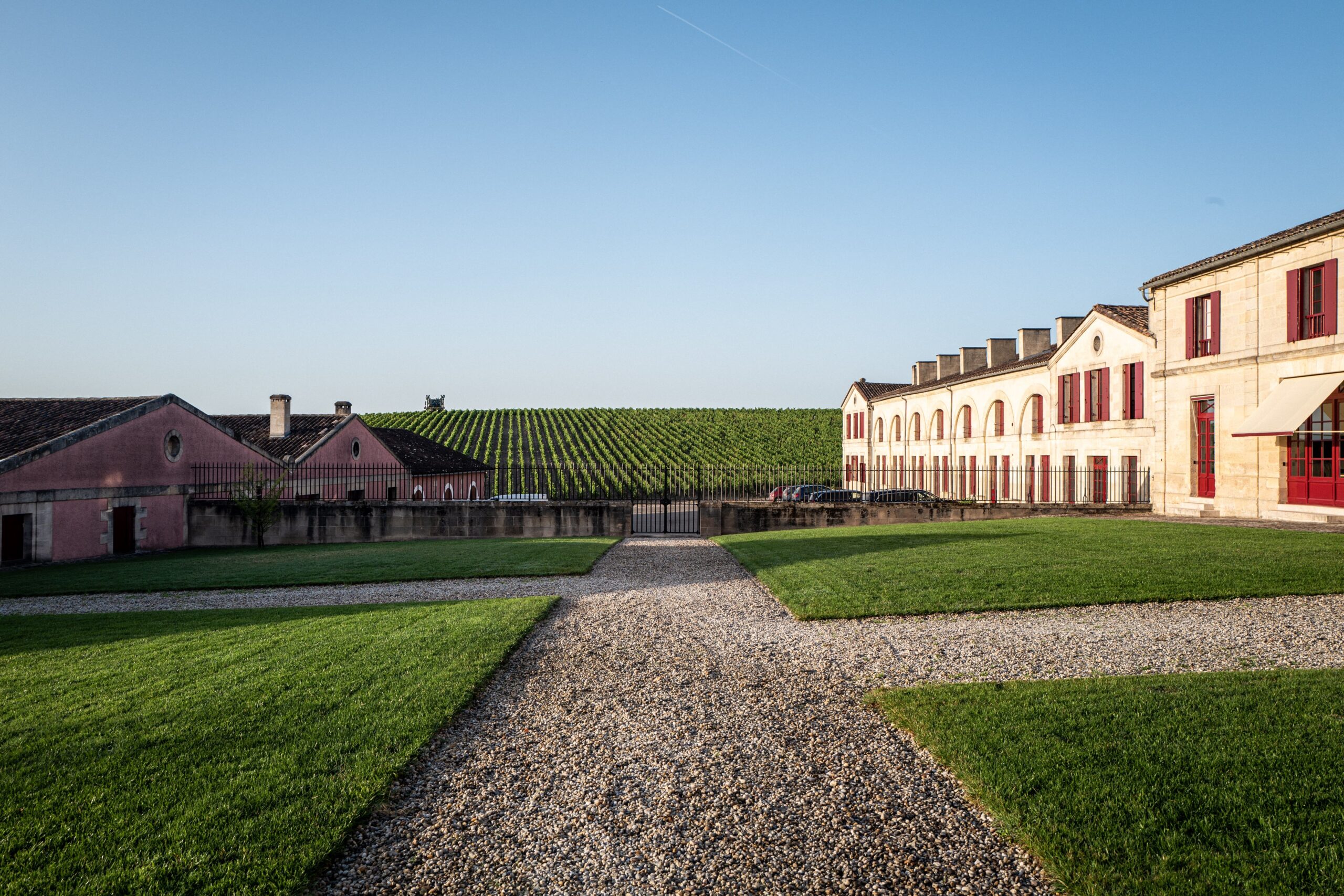

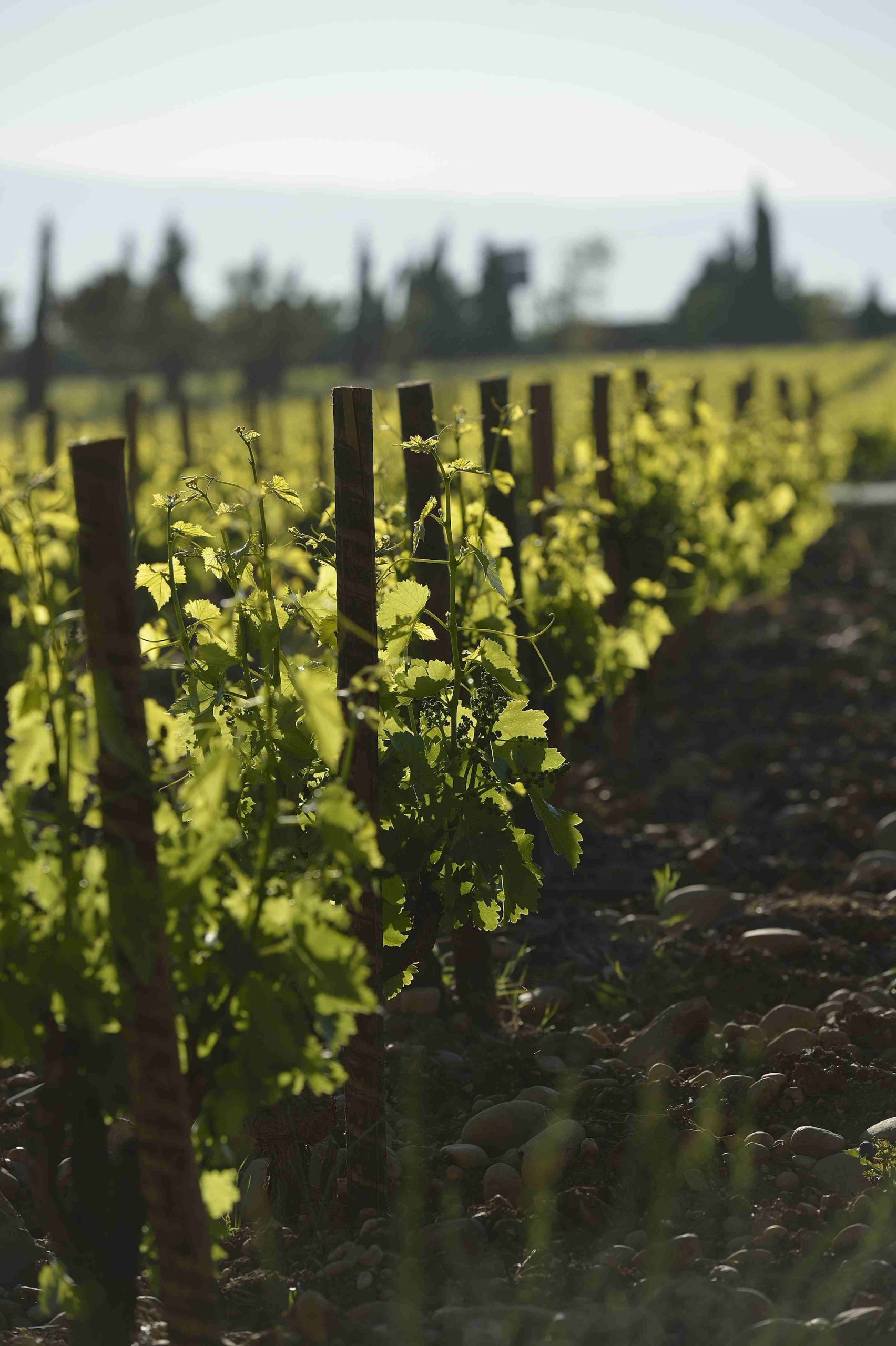

2. What are the key factors to consider when renovating a wine estate?
What can we keep of what already exists?
First of all, an audit of the existing building is always the first step in a renovation or refurbishment project:
- What can we keep?
- What do I need to update?
You’re lucky because you’re not starting from scratch.
Project orientation and site analysis
Secondly, if you wish to integrate your winery into an eco-responsible approach, this step may prove necessary during your renovation.
Look at the orientation of your building to see if work on insulation, ventilation, etc. is necessary.
Programming and sizing
Would you like to renovate your winery in an eco-responsible way?
But do you want to go further?
Think about the program you could set up around your new eco-responsible winery: a restaurant, tasting cellars…
What budget do I have to carry out my project?
That’s THE question you’ll need to answer quickly to define the overall ambition of your eco-responsible winery renovation project.
How we helped the Rothschild family renovate and extend their winery: Château Lafite Rothschild .
Discover the project3. How can I renovate my winery in an eco-responsible way?
What’s your winery’s responsible ambition?
There are many options open to you.
Whether aesthetic, technical or utilitarian, they are numerous!
In addition, the aim is of course to integrate certain tools and techniques into the current work and production process as part of the renovation.
Indeed, to facilitate the adoption of these new eco-responsible methods, it is important to find solutions that can be easily mastered by all workers, sommeliers, cellar masters… Thus, several eco-responsible solutions can be envisaged for a more sustainable wine production.
We advise you to think carefully about :
a. Select sustainable materials
Whether you’re renovating a winery or a vineyard, or simply refurbishing a single-family home, this step is essential if you want to adopt an eco-responsible approach.
This applies not only to insulating materials, as mentioned above, but also to wall, floor and roof coverings.
Many different materials are available, each of which can add a very personal touch to your winery.
In the case of renovation work, we recommend simple claddings made from geosourced materials, such as :
- Wood: with wood cladding, your building will blend aesthetically into the landscape.
What’s more, it can be a less expensive solution than concrete. - Stone in gabions: this is the solution chosen by star architects Herzog & de Meuron for California’s Dominus Estate.
Basalt stone enclosed in gabions lets the sun’s rays through and facilitates ventilation. - Terracotta moucharabiehs: yet another solution to naturally ventilate the winery.
In fact, this was one of the options used by Portzamparc for the Cheval Blanc winery in the Bordeaux region.
Many combinations are possible and remain to be explored.
It’s an opportunity to highlight your terroir, through the architecture of your winery, while creating a singular identity.
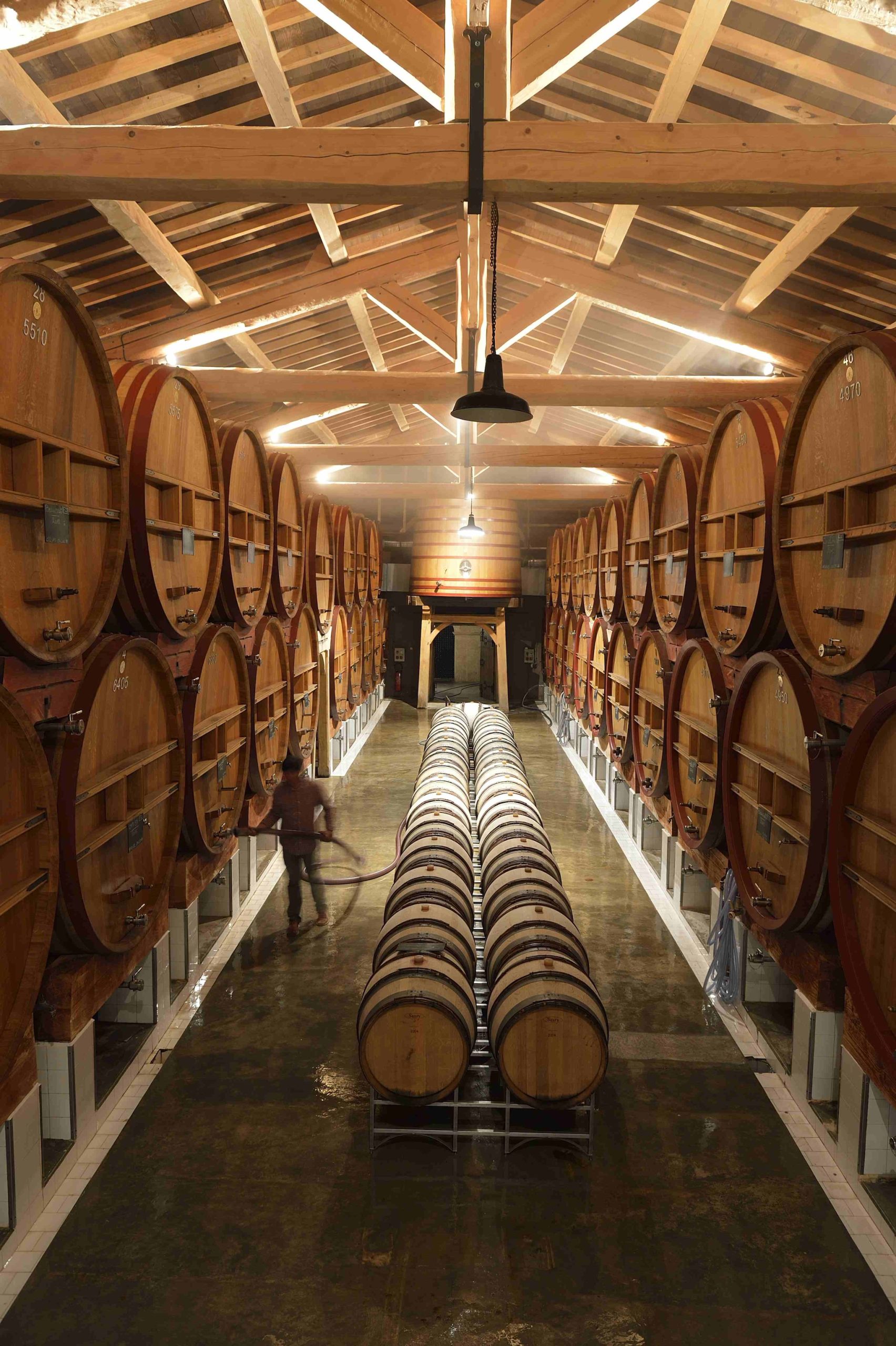

Château de Beaucastel – Courthézon, France
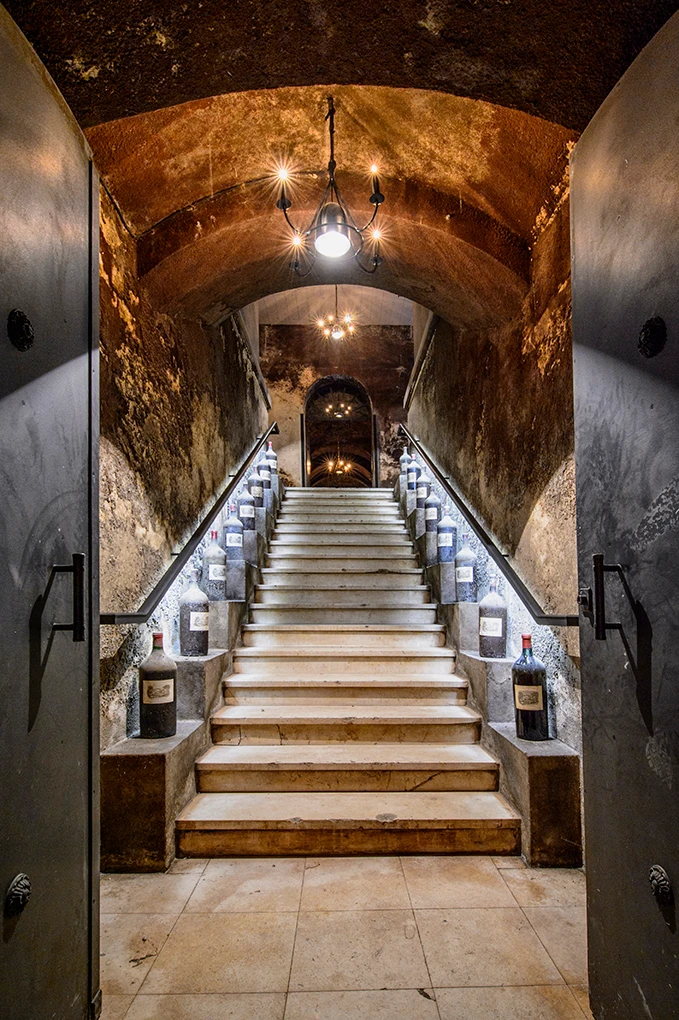

Château Lafite Rothschild – Pauillac, France
b. Sustainable cellar insulation
When renovating or refurbishing a wine cellar to make it eco-responsible, it’s essential to take a close look at the existing situation and rethink the cellar’s insulation system.
Depending on the age of the winery, certain walls or insulating partitions may be damaged.
Work is therefore necessary.
That’s why we advise you to use natural insulating materials such as hemp, straw and lime plaster to insulate while creating a breathable space.
c. Think low-pollution energy sources
Some estates, such as Chateau Lafitte in the Bordeaux region, have integrated photovoltaic panels into the roof of their winery.
It’s a simple solution that’s easy to implement.
In fact, it has enabled the famous Bordeaux winery to become completely self-sufficient in terms of electricity consumption.
Other easy-to-install solutions for renovating an eco-responsible winery include thermovoltaic panels to produce hot air for drying vines, shoots, etc. They can also be used to produce hot water for cleaning vats.
d. Heating and ventilation that take advantage of the environment’s natural assets
Finally, sustainable solutions exist for the vat room, the production area and the wine cellar.
Canadian wells are easier to install in a new winery than in a renovation project.
They promote natural geothermal energy and constant coolness, ensure healthy storage without excess humidity, and are very easy to maintain.
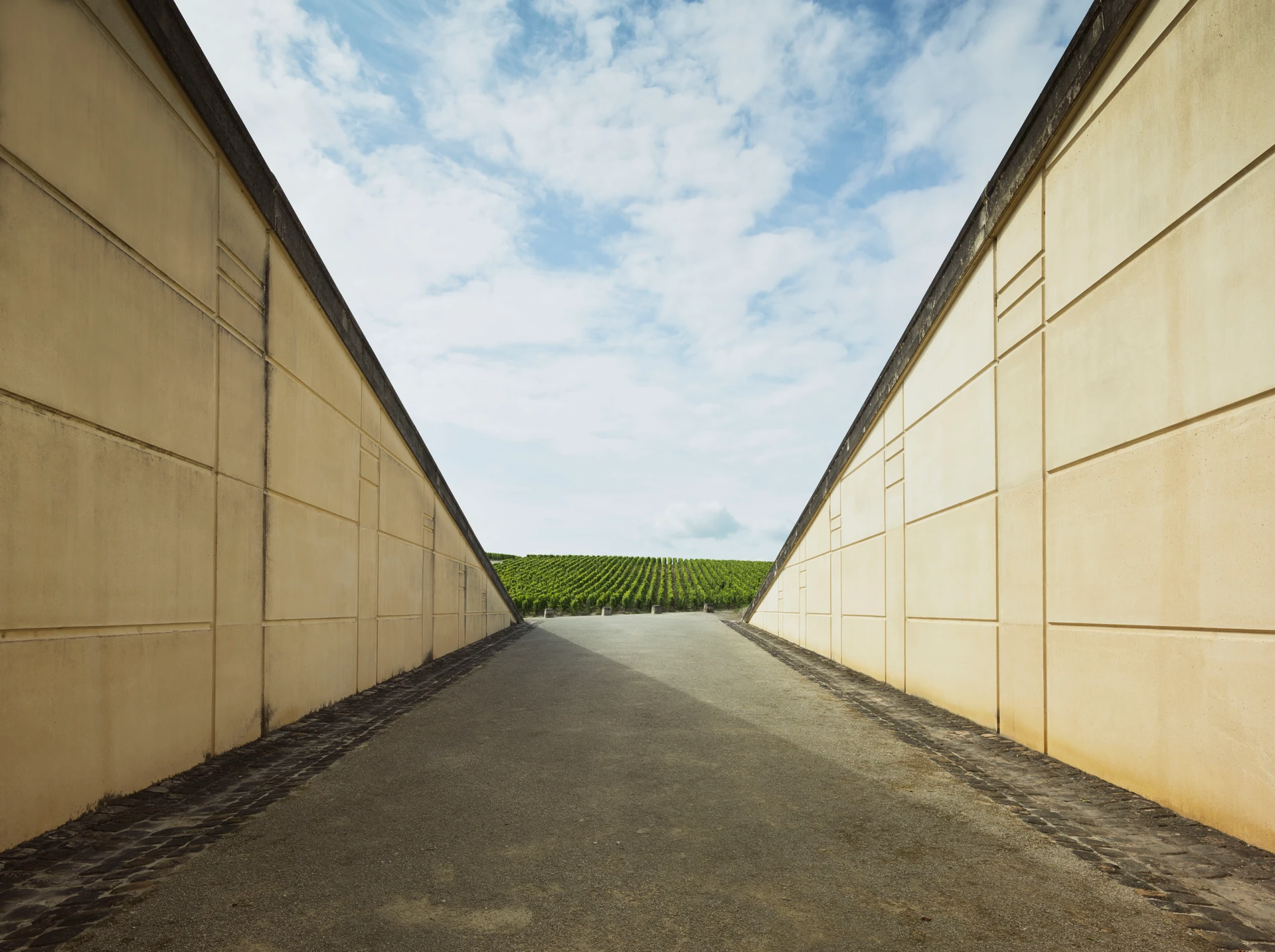

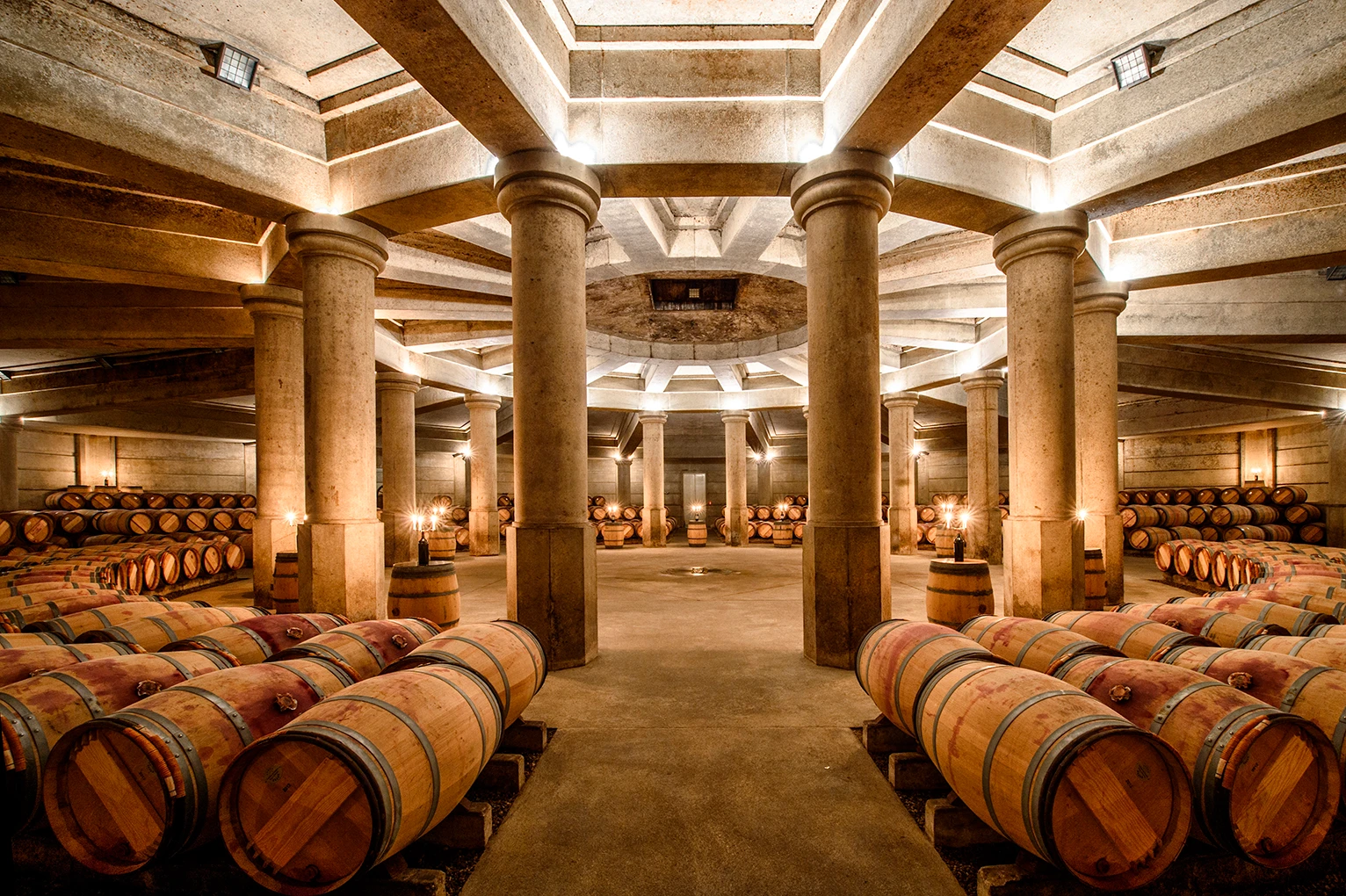

Château Lafite Rothschild – Pauillac, France
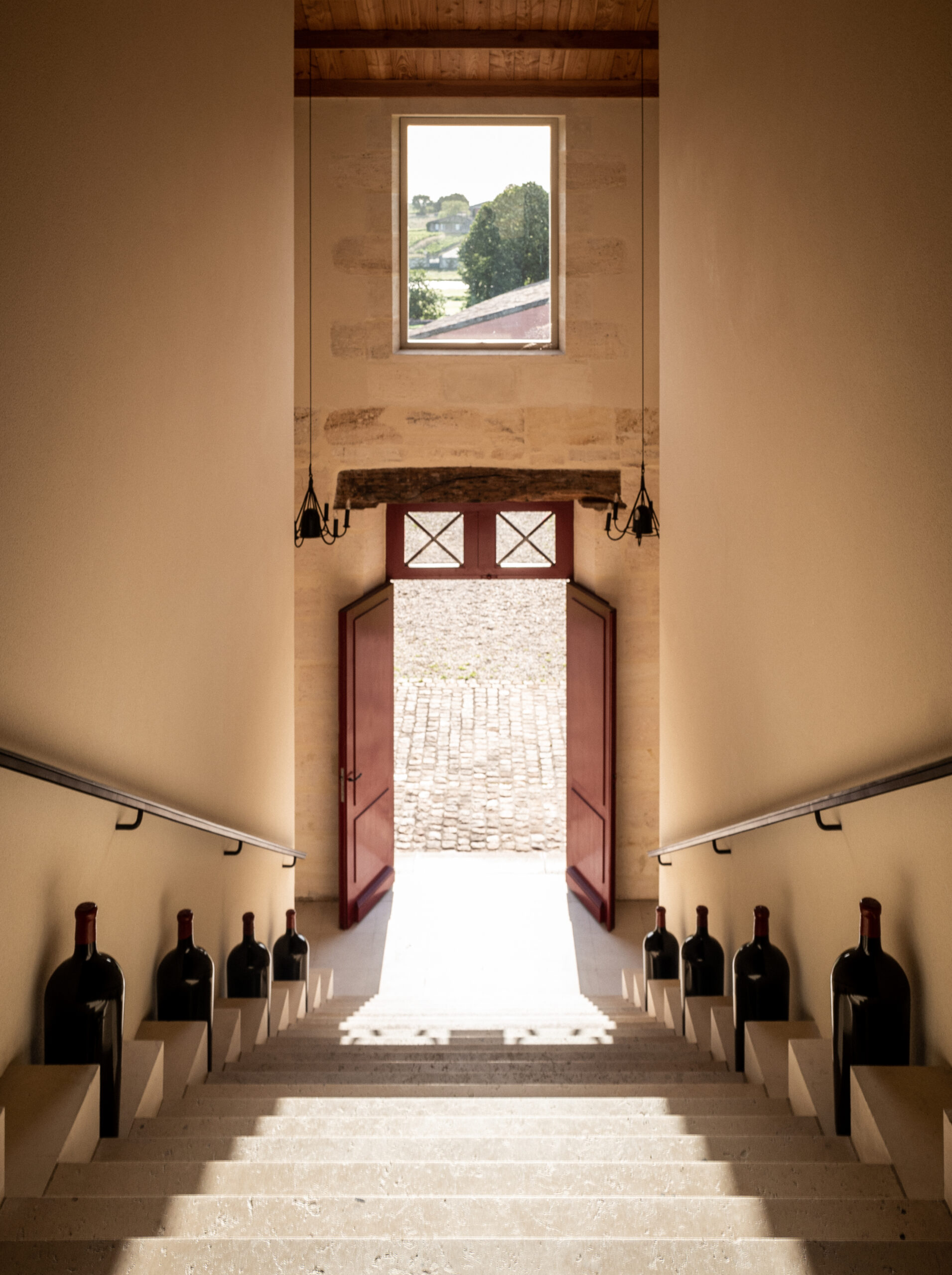

e. Implement sustainable solutions for waste and effluent management.
La gestion des effluents :
Wine effluent management is an issue that concerns all cellar masters and cellar masters’ workers.
These effluents result from the various operations involved in cleaning and washing farm equipment or bottling wine production.
One example is the installation of a natural purification station, based on reeds whose bacteria will purify your wastewater.
Finally, to optimize this cleaning stage, you might also consider integrating a rainwater recovery system to clean the site or farm machinery.
La gestion des déchets :
Although the waste generated during wine production is of natural origin, it may be worth considering a composting system to reuse it.
In particular, some companies offer solutions for composting vine shoots for reuse as fertilizer in the vineyard.
f. Think green roof
It’s a solution that’s being used more and more, not only for the renovation or refurbishment of wine cellars, but for all other architectural projects.
Depending on the curvature of your building, these solutions can be very easy to install.
They have the interesting property of providing good thermal insulation of the building, in a natural way (approximately 10 to 30% less air conditioning).
What’s more, they require very little maintenance and create a unique aesthetic dimension.
Indeed, many great estates use this solution, such as Antinori nel Chianti Classico, in Italy, Cheval Blanc, in the Bordeaux region, or Chateau Lacoste, near Aix-en-Provence.
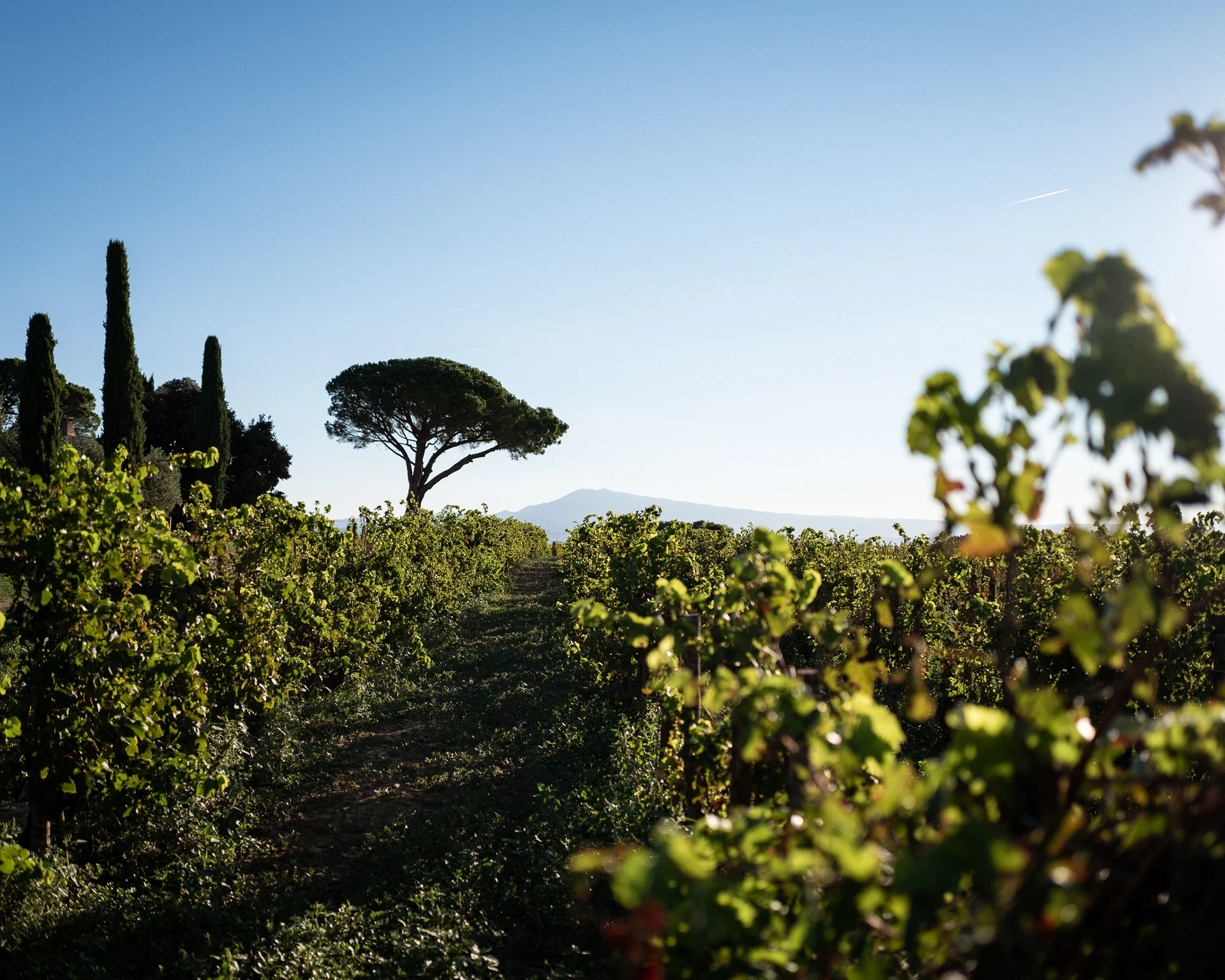



Château de Nalys – Châteauneuf-du-Pape, France
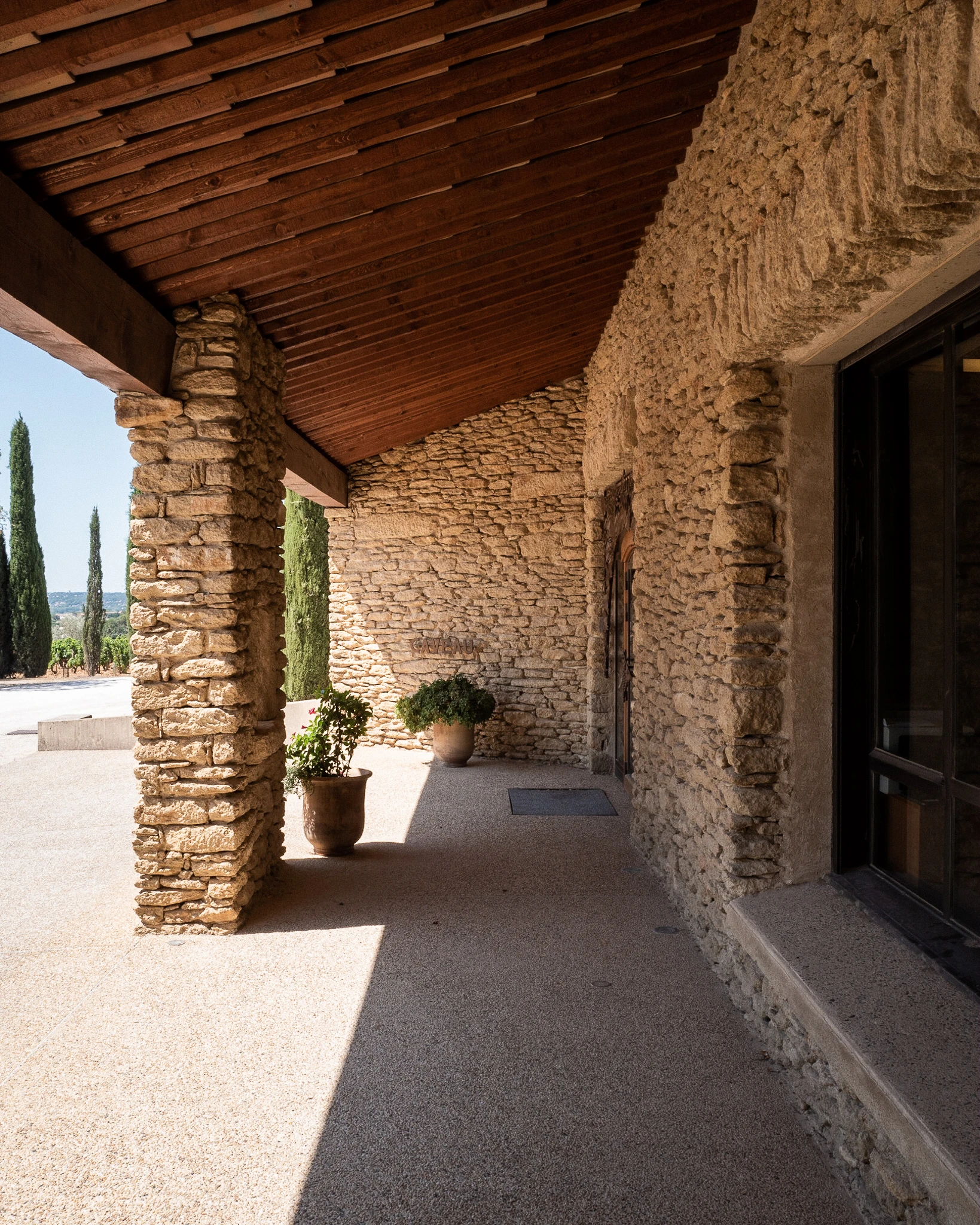

4. What are the key stages to a successful eco-responsible wine storehouse renovation project?
Defining your project and priorities
- How much storage space do I need for my barrels and casks? What surface area do I need for my winery to accommodate my vats?
- Do I intend to create a tasting cellar to welcome my customers?
- Do I want to develop ancillary activities, such as on-site catering or hotel services?
Choose the right architect to accompany you on this project (of a lifetime)!
The architect will turn your investment into a profitable project by incorporating elements that will make all the difference.
He won’t necessarily try to propose an extravagant project, but will take your wishes and budget into account.
Thanks to his expertise, he will optimize the space, organization and technical aspects of your project.
He’ll know how to choose the right materials to maintain an ideal temperature, and orient your winery so as to benefit from optimal sunlight, whether in Bordeaux, Provence or Burgundy.
What’s more, this professional will highlight your know-how and uniqueness, allowing you to stand out in your terroir.
In the long term, this will contribute to the success of your business.
To find out more, read our advice on building or renovating a winery with the help of an architect.
5. How do you launch an eco-responsible wine estate renovation project? Organising an architectural competition
It’s not always easy to find the right architect, one who fully understands your project, your aspirations, and to whom you can entrust what may represent the project of a lifetime.
Before committing yourself to an architectural direction, you might want to imagine what your winery would look like under different architects’ eyes.
That’s why, to get your project off the ground, we recommend organising an architectural competition.
The aim?
Receive several proposals and choose the architect whose vision best matches your expectations.
This is precisely what we offer at Because Architecture Matters.
What’s more, we’ll be on hand to monitor the progress of the work and act as your project manager.
6. Why organise an architectural competition for a winery with Because Architecture Matters?
We offer turnkey architectural competitions for private clients seeking both exceptional architectural quality and optimum environmental performance.
- Encouraging architectural creativity: the competition encourages teams to surpass themselves in designing innovative, high-quality architectural solutions, while respecting the budget and expectations of the client.
- Adopting an Ecological Approach: Working with BAM means putting ecology at the heart of your project right from the design stage.
- Discover new talent: By opting for a competition, you offer talented young agencies, whom you might not have considered, the opportunity to propose bold, creative ideas for your project.
- Strengthen communication with your community: The competition is a fantastic opportunity to promote your project and engage your community (employees, customers, local authorities, etc.) throughout its development.
- Maximize your return on investment: The competition also saves you time and money.
By comparing the overall cost of a building’s life with the benefits of a well-designed project (well-being, flexibility, image, operation), you’ll discover the true added value of a competition.
To find out more about the various stages involved in organizing a contest with BAM, click here.
Are you planning to renovate or refurbish an eco-responsible winery?
Our winery projects,
Find out more about our current projects and read the stories of the owners we are working with on their winery construction or renovation projects.
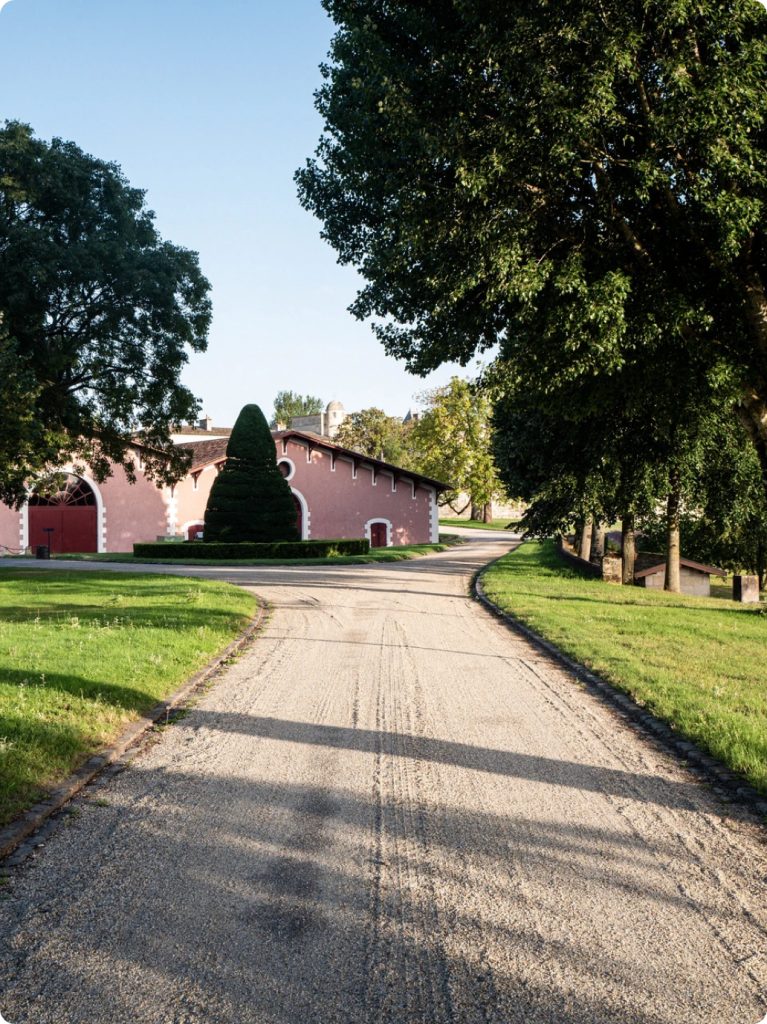

Château Lafite Rothschild: Renovation and extension of a winery
Delivery in 2025


Château de Nalys: Renovation and extension
Delivery in May 2026


